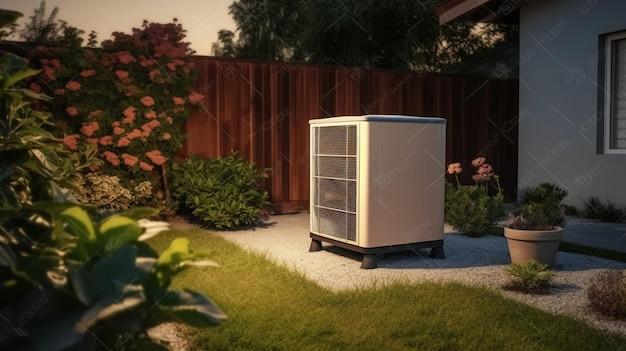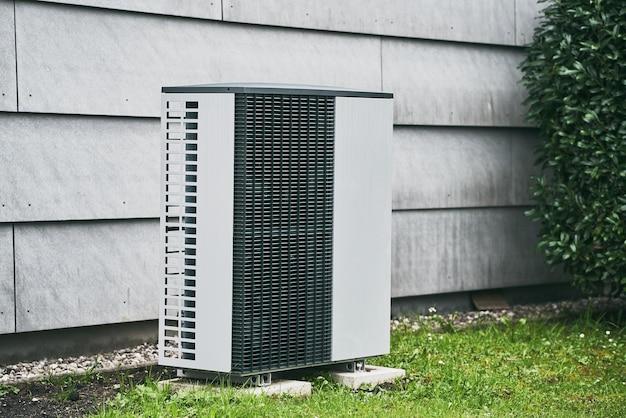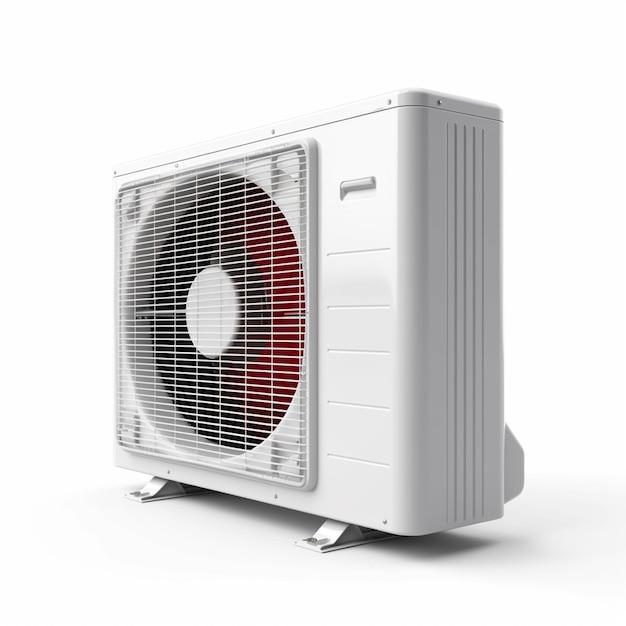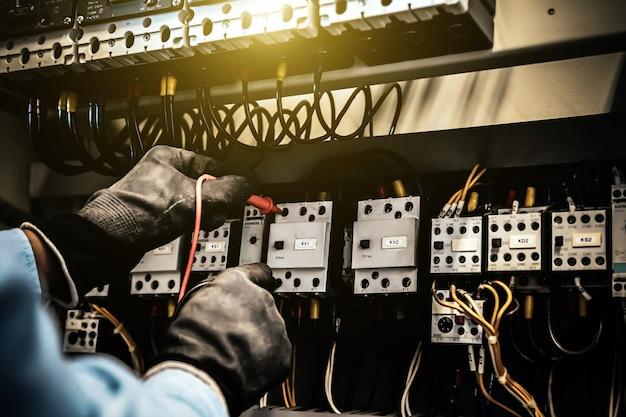Are you tired of constantly adjusting your thermostat to maintain a comfortable temperature throughout your home? Do you have a two-story house that always seems to have temperature imbalances? If this sounds familiar, then perhaps it’s time to consider converting your single zone HVAC system into a dual zone.
A dual zone HVAC system allows you to control the temperature and airflow in different areas of your home independently. This means you can have different temperatures on different floors or in different rooms, which can be a game-changer in terms of comfort and energy efficiency.
But, is it worth it to convert? How does it work? And what’s the cost? These are all valid questions that we’ll address in this comprehensive guide.
We’ll explore the benefits and drawbacks of a dual zone system, how it works, the different types of systems available, and the cost of converting or adding zones to an existing HVAC system. By the end of this post, you’ll have all the information you need to determine if a dual zone HVAC system is right for you and your home. Let’s get started!
Converting a Single Zone HVAC to a Dual Zone Setup
If you’re stuck with a single zone HVAC system, you may have to deal with inconsistent temperatures in different parts of your home. Fortunately, converting to a dual zone system can fix this problem. Here’s what you need to know:
How a Dual Zone HVAC Works
A dual zone HVAC system essentially divides your home into two temperature-controlled zones. This means that you can set different temperatures for each zone, giving you greater control over your home’s climate.
Steps to Convert
To convert from a single zone to a dual zone HVAC system, you’ll need to hire a licensed HVAC professional. Here’s an overview of the steps they’ll likely take:
1. Assess Your System
The HVAC technician will inspect your current setup to determine if it can be converted to dual zone. They’ll check the ductwork, the system’s capacity, and the overall layout of your home.
2. Install Dampers
If your current setup is compatible with a dual zone system, the technician will install dampers in the ducts. Dampers are essentially valves that can restrict or redirect airflow. By controlling the flow of air, the technician can direct it to the zones that need it.
3. Program the Thermostat
Once the dampers are installed, the technician will program your thermostat to recognize the two zones. They’ll also set temperature limits for each zone.
Benefits of Upgrading
Upgrading to a dual zone HVAC setup offers a number of benefits. Here are some of the biggest advantages:
- Eliminates hot and cold spots in your home
- Provides greater control over your home’s temperature
- Saves energy by reducing unnecessary heating or cooling
- Increases the resale value of your home
Converting from a single zone HVAC setup to a dual zone one is a smart investment that can save you money and improve your home’s comfort. By working with an experienced HVAC technician, you can ensure that your conversion is done safely and effectively.
Converting to 2 Zone HVAC with One Unit
If you’re looking to upgrade your house’s heating and cooling system, it’s time to upgrade to 2 Zone HVAC with one unit. This system divides your home into two separate zones, each with its own thermostat, controlled by damper systems to regulate airflow. This way, you can set different temperatures for different zones within your home.
Benefits of 2 Zone HVAC with One Unit
One of the biggest advantages of this system is the energy savings it offers. By having separate thermostats for different areas of the house, you can easily control the temperature in each zone, reducing energy consumption and saving money on your bills. Additionally, it allows you to create customized comfort levels for specific areas, giving you better control over your indoor climate.
How Does it Work
The system works by using a single air handler that provides heating and cooling for both zones. Airflow is regulated by a set of dampers, which direct hot or cold air to the appropriate zone. Each zone has its own thermostat that communicates with the air handler to adjust the temperature accordingly. You can even add a zoning panel to control individual rooms.
Is it Easy to Install
The installation of a 2 Zone HVAC with one unit system is relatively straightforward and can be accomplished by a professional HVAC technician in a matter of hours. It involves adding a zoning panel and additional ductwork to divide the house into two separate zones.
In summary, converting to 2 Zone HVAC with one unit is a cost-effective way to create a more comfortable, energy-efficient living space. With separate thermostats for different areas of the house, you can stay comfortable while saving money on your energy bills. If you’re considering upgrading your HVAC system, this is a smart choice.
Converting to Multi Zone HVAC
If you’re considering converting your single zone HVAC system into a multi zone one, it’s important to understand what it involves and why it might be beneficial for you.
What Is Multi Zone HVAC
Multi zone HVAC allows you to control different areas or rooms of your home with different temperatures at the same time. Essentially, it involves installing multiple thermostats that can independently control the temperature of specific zones or areas of your home.
Benefits of Multi Zone HVAC
Multi zone HVAC can have several benefits.
Energy Efficiency
With a single zone system, you have to cool or heat your entire home, even if you’re only using a few rooms or areas. This can result in wasted energy and higher energy bills. With multi zone HVAC, you can avoid this problem and save money by only cooling or heating the areas you’re using.
Customized Comfort
Everyone has different temperature preferences. With multi zone HVAC, you can set different temperatures in each zone to suit everyone’s comfort level. This can be especially helpful in larger families or households where different people have different preferences.
Reduced Wear and Tear
If you have a single zone system, it has to work harder to cool or heat your entire home. This can lead to increased wear and tear on the system and a shorter lifespan. With a multi zone HVAC system, you’re only using your system as much as you need to, which can extend its lifespan.
How to Convert to Multi Zone HVAC
Converting from a single zone HVAC system to a multi zone one involves more than just installing additional thermostats. You’ll also need dampers in your ductwork that can redirect the airflow to the different zones. Additionally, you may need to upgrade your HVAC equipment to accommodate the new system.
It’s important to work with a qualified HVAC contractor who can assess your home’s needs and recommend the best multi zone HVAC system for you.
Upgrading to a multi zone HVAC system can offer several advantages, such as increased energy efficiency, customized comfort, and reduced wear and tear on your HVAC system. When converting your single zone system to a multi zone one, it’s important to work with an experienced contractor who can guide you through the process and help you choose the right system for your home.
How to Split Heating Zones
Heating zones allow you to efficiently heat different areas of your home according to your needs. Creating separate zones within your HVAC system is a great way to save energy and optimize your heating bill. Here’s how you can split your heating zones to increase your home’s comfort and save money:
Evaluate Your Home’s Floor Plan
Before you start splitting your heating zones, evaluate your home’s floor plan to identify areas with common heating needs. Separate your home into logical zones depending on the level of insulation, room orientation, and heating requirements. By splitting your HVAC system into separate zones, you can adjust the temperature independently and create customized comfort zones.
Install Zone Dampers
Install zone dampers to control the flow of hot air to each area of your home. Zone dampers are devices that are installed inside your ductwork and can block or allow airflow depending on your needs. They work in conjunction with your thermostat and HVAC system to control the temperature in specific areas.
Invest in Programmable Thermostats
Programmable thermostats allow you to set the temperature in each heating zone according to your preferences and schedule. You can program each zone’s thermostat to automatically adjust the temperature when you’re sleeping or away from home. By doing this, you can reduce the amount of energy you use and save money on your heating bill.
Monitor Your Energy Usage
Tracking your energy usage is an essential step in optimizing your heating zones. Use a home energy monitoring system to track your energy consumption and identify ways to reduce your usage. You may find that some areas of your home require less heating, and you can adjust your thermostat accordingly.
Splitting your heating zones is an excellent way to reduce your energy consumption and save money on your heating bill. By investing in programmable thermostats, zone dampers, and monitoring your energy usage, you can optimize the comfort and efficiency of your home. Use these tips to make your home more comfortable while reducing your heating bill.
Is Dual Zone HVAC Worth It
If you’re thinking of upgrading your HVAC system, you might be wondering whether getting a dual-zone system is worth the extra investment. There are several factors to consider when deciding whether this is the right choice for your home.
Climate Control
Dual-zone systems allow you to control the temperature in different areas of your home independently. This means that if you have a room that’s always too hot or too cold, you can adjust the temperature without affecting the other rooms. This is especially helpful if you have family members with different temperature preferences.
Energy Efficiency
While dual-zone HVAC systems can cost more upfront, they can also save you money in the long run on energy bills. Because you can control the temperature in each zone separately, you don’t have to heat or cool empty rooms or areas that are rarely used. This can result in significant energy savings over time.
Comfort
Another advantage of a dual-zone system is that it can improve the overall comfort of your home. With traditional single-zone systems, certain areas of the house can end up being too hot or too cold. This can be especially frustrating during extreme weather conditions. With a dual-zone system, you can set the temperature to your desired level in each area of your home, resulting in a more comfortable living environment.
Added Value
Installing a dual-zone HVAC system can also increase the value of your home. If you’re planning on selling your house in the future, having a dual-zone system can be a selling point for potential buyers. They may be willing to pay more for a home with a more advanced and efficient HVAC system.
In conclusion, a dual-zone HVAC system can be worth the investment for those who value climate control, energy efficiency, and comfort in their homes. It can also increase the value of your home if you plan to sell in the future. Although it may cost more upfront, the benefits can outweigh the initial investment in the long run.
Zoned HVAC for a Two-Story House
If you have a two-story home, you may be wondering how to effectively manage the temperature on both floors without having to install two separate units. The solution is zoned HVAC.
What is Zoned HVAC
Zoned HVAC is a system that divides your home into separate areas, or “zones,” and allows you to control the temperature in each zone independently. This can be accomplished by installing multiple thermostats or dampers in your ductwork to regulate the flow of heated or cooled air to each zone.
Benefits of Zoned HVAC for a Two-Story House
One of the biggest advantages of zoned HVAC for a two-story house is that it allows you to tailor the temperature to your preferences on each floor. For example, if you spend more time upstairs during the day, you can adjust the temperature to be cooler upstairs while keeping it warmer downstairs. This can result in significant energy savings and can also help to extend the life of your HVAC system.
Another benefit is that zoned HVAC can help to eliminate hot and cold spots throughout your home. If you’ve ever experienced a room that’s too hot or too cold, you know how uncomfortable it can be. Zoned HVAC can help to solve this problem by allowing you to adjust the temperature in each zone to be just right.
Installation and Maintenance
Installing a zoned HVAC system in your two-story home may require some modifications to your existing ductwork, but it’s generally a straightforward process for a professional HVAC contractor. Once installed, the system requires regular maintenance, including cleaning the ducts, changing filters, and checking the thermostats and dampers.
In summary, zoned HVAC is a great option for managing the temperature in a two-story house. It allows you to tailor the temperature to your preferences, eliminates hot and cold spots, and can result in energy savings. If you’re interested in installing a zoned HVAC system in your home, be sure to consult with a professional HVAC contractor to ensure that it’s done correctly.
Adding a Zone to Existing HVAC Cost
If you’re thinking of converting a single zone to a dual zone HVAC system, you might also be curious about the cost of adding a zone to an existing HVAC system. Here’s what you need to know:
Factors that Affect the Cost of Adding a Zone to Existing HVAC
Several factors can influence the cost of adding a zone to an existing HVAC system. Some of these factors include:
Size of Your Home
The size of your home plays a significant role in determining the cost of adding a zone. Larger homes require more HVAC units and ducts, which means a higher cost.
Type of Existing HVAC System
The type of existing HVAC system you have can also impact the cost of adding a zone. The cost may vary widely depending on whether you have central air conditioning or a ductless mini-split system.
Number of Zones
The number of zones you want to add will undoubtedly affect the total cost. Generally, adding one or two zones may not be as expensive as adding several zones.
Difficulty of Installation
Another crucial factor that will influence the cost is the difficulty of installation. If the installation is straightforward, the cost will be lower, but if the installation requires more time and effort, then the cost will be higher.
How much does it cost to add a zone to an existing HVAC system
The cost of adding a zone to your existing HVAC system can vary depending on various factors. However, on average, the cost of adding a zone is typically around $5000-$7000.
The total cost of adding a zone to an existing HVAC system includes the following:
Cost of Materials
The cost of materials will include the ductwork, dampers, zoning control panel, and thermostats. The cost may vary depending on the type and quality of materials used.
Labor Cost
Labor cost is another significant factor that can affect the cost of adding a zone to an existing HVAC system. The amount of work involved, the difficulty of the installation, and the expertise of the contractor can all impact the cost.
Miscellaneous Costs
Miscellaneous costs may include permits, duct cleaning, and removal of the existing ductwork, if necessary.
Adding a zone to an existing HVAC system can improve comfort and energy efficiency in your home. However, it’s essential to keep in mind that the cost of adding a zone can vary based on various factors. By keeping these factors in mind, you can make an informed decision about whether to add a zone to your existing HVAC system and budget accordingly.
Dual Zone Heating with One Furnace
Dual zone heating is nothing new to the world of heating and cooling. It is an efficient and convenient way to heat and cool your entire home, giving you more control over the temperature in individual rooms. Dual zone heating means that you can have two different temperature zones in your home. This means that you can have one temperature zone for the bedrooms and another for the living room, for example.
But what if you only have one furnace? Can you still have the benefits of dual-zone heating? Yes, you can.
How Does It Work
One of the ways to achieve dual-zone heating with a single furnace is by installing a zone control system. A zone control system is a set of dampers that are installed in the ductwork of your HVAC system. Each damper controls the airflow to a specific zone in your home.
These dampers can be controlled by a thermostat in each zone. For example, you can set a lower temperature in the bedrooms at night and a higher temperature in the living room during the day. The zone control system will automatically adjust the airflow to each zone to maintain the desired temperature, without affecting the other zones.
Advantages of Dual Zone Heating
There are many advantages to having a dual-zone heating system with one furnace. Firstly, it can save you money by reducing your energy bills. With a zone control system, you can only heat the areas of your home that you are using, rather than wasting energy on areas that are not in use.
Secondly, it provides greater comfort and flexibility. Each zone can be adjusted individually, meaning that people in different rooms can set the temperature to their preferred level.
In conclusion, dual-zone heating with one furnace is a great way to achieve greater comfort and flexibility in your home, while also reducing your energy bills. By installing a zone control system, you can enjoy the benefits of dual-zone heating even if you only have one furnace. So, if you want to upgrade your HVAC system, consider installing a zone control system and start enjoying the benefits today!
Can You Convert to a Dual Zone HVAC
If you’re tired of living in a home where one area is always cold while another area is uncomfortably hot, converting to a dual zone HVAC system might be an ideal solution. But, is your current single zone HVAC system compatible with a dual zone setup? Well, the answer depends on a few factors.
Understanding Your Single Zone HVAC System
Before you start to convert, you need to understand your current single zone HVAC system. A basic HVAC system comprises a furnace, air conditioner, and ductwork, and it uses your thermostat to control the temperature in your home. A single thermostat controls the temperature in your entire house, irrespective of the fact that different areas might have varying temperature requirements.
Checking Compatibility
Knowing whether your current HVAC system can be converted into a dual zone system isn’t always straightforward. However, an expert HVAC contractor can help you determine whether your system is compatible. Your contractor will assess your existing ductwork and zoning requirements to determine whether or not your system can be converted.
If your HVAC system is older than ten years, you may have to replace your entire system since older systems were not designed to support a dual zone setup.
The Benefits of Converting to a Dual Zone HVAC
Converting to a dual zone HVAC system can offer several benefits, the most obvious of which is improved comfort. Dual zone HVAC systems can help ensure that each room or space in your home receives the appropriate amount of heating and cooling required to keep it comfortable.
Apart from improving comfort, dual zone HVAC systems can significantly lower your energy bills by preventing wasted energy. With zone controls, you will not have to heat or cool unoccupied rooms, thereby reducing your energy consumption and saving money on your monthly energy bills.
Converting to a dual zone HVAC system can be a wise investment if you’re tired of living in a home where one area is always too hot or too cold. While you can perform simple DIY HVAC procedures, converting to a dual zone system isn’t one of them. You will need to hire an experienced HVAC contractor to help you determine whether your existing system can support a dual zone setup and carry out the installation.
Adding Zones to Your Existing HVAC System
If you’re wondering whether it’s possible to add zones to an existing HVAC system, the short answer is yes! With the right equipment, installation, and professional help, you can convert a single-zone HVAC system into a multi-zone one.
What is a Single-Zone HVAC System
A single-zone HVAC system provides heating and cooling to your entire home from a single thermostat. All the rooms in your house receive the same temperature, regardless of whether they are occupied or not. This setup can be less efficient and result in higher energy bills.
What is a Dual-Zone HVAC System
A dual-zone HVAC system divides your home into two or more zones, each with its own thermostat control. This setup allows you to adjust the temperature of each zone separately, depending on the needs of your household. This can help reduce your energy expenses and provide more comfortable living spaces.
Converting a Single-Zone HVAC System to a Dual-Zone One
To convert your single-zone HVAC system to a dual-zone one, you’ll need to add a second thermostat and control panel and install some ductwork. This will require the help of a professional HVAC technician to ensure that the installation is performed safely and correctly.
Benefits of Converting to a Dual-Zone HVAC System
Converting your single-zone HVAC system to a dual-zone one can bring several benefits, including:
- Energy savings: By only heating or cooling inhabited zones, you can reduce your energy bills.
- More comfortable living spaces: Different areas of your home often have different temperature needs, depending on their function and occupancy. By providing tailored heating and cooling, you can create more comfortable living spaces.
- Improved air quality: With a dual-zone HVAC system, you can filter the air more effectively in each zone, improving your indoor air quality.
In conclusion, adding zones to an existing HVAC system is possible and can bring various benefits. However, it’s essential to hire a professional to perform the installation and ensure that it is done safely and according to code. Contact a qualified HVAC technician to discuss your options and determine what would work best for your home and family.



